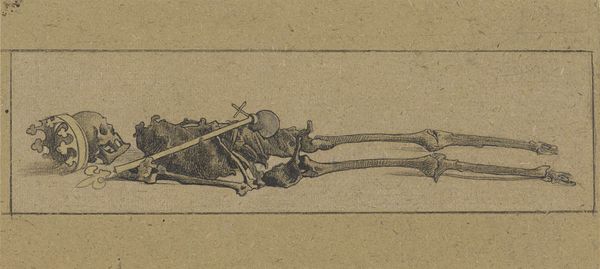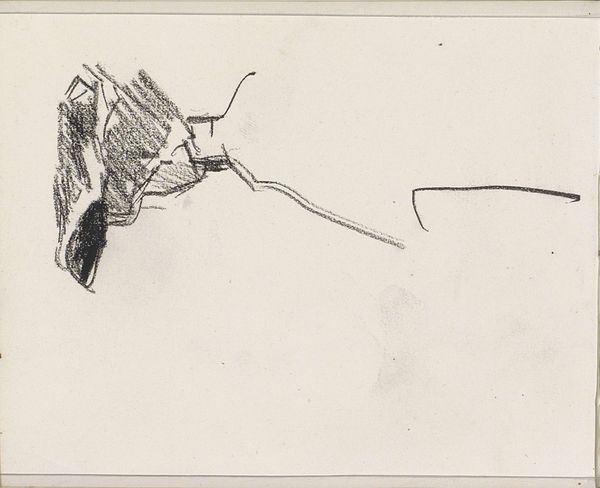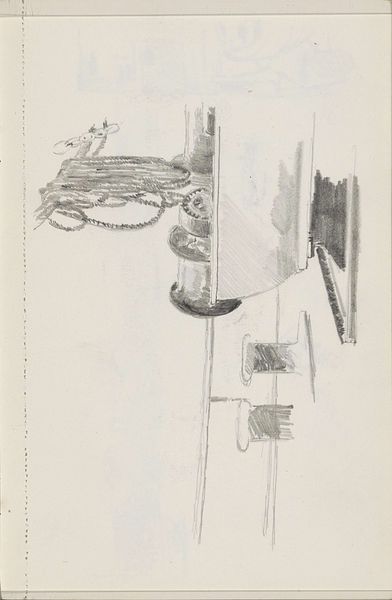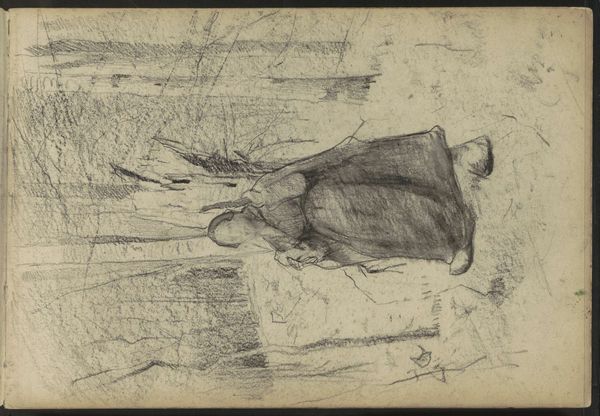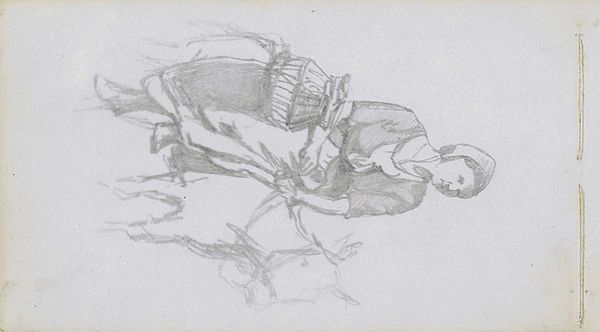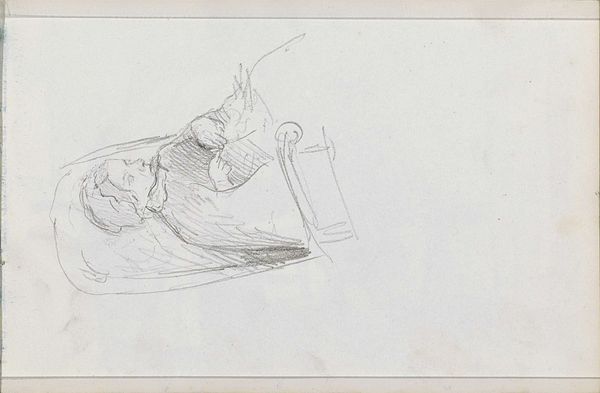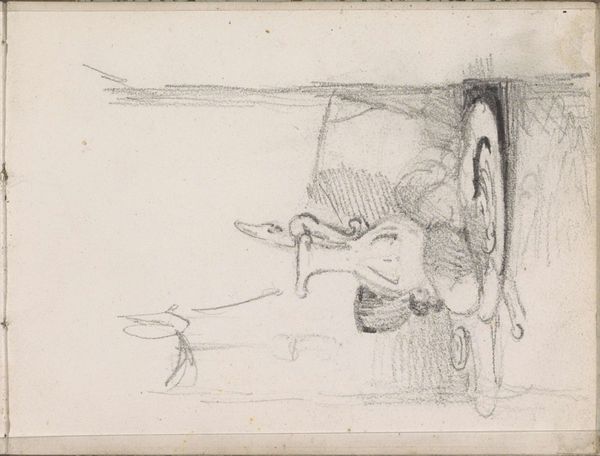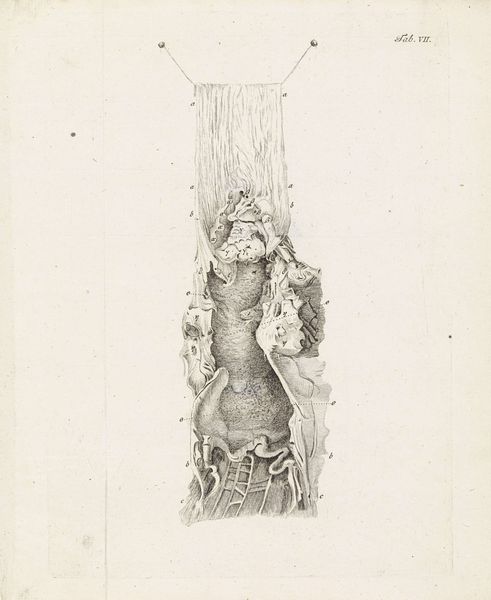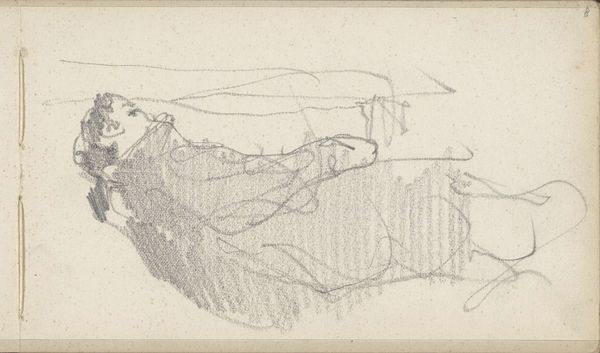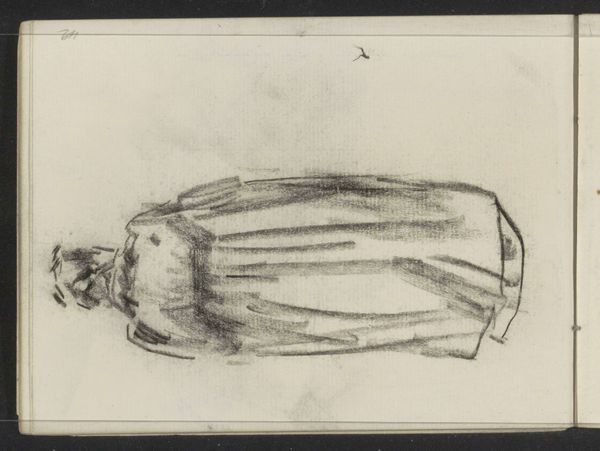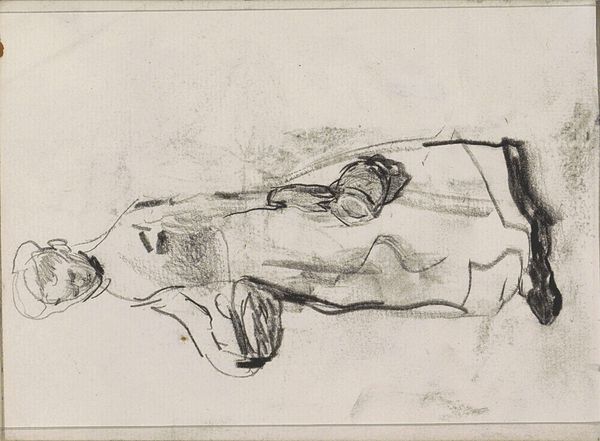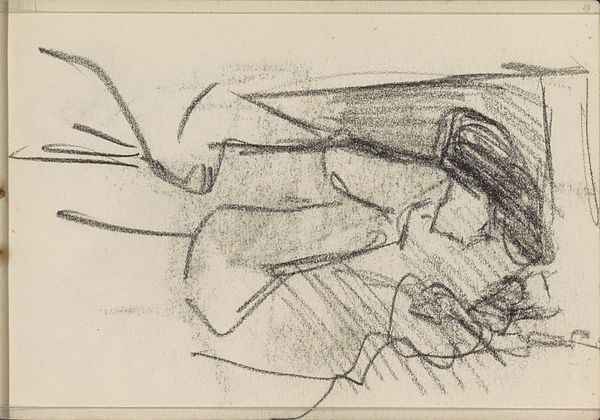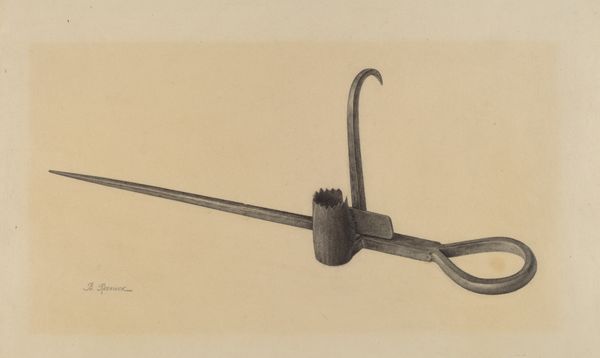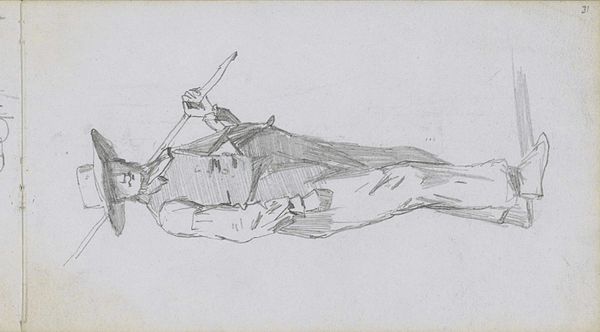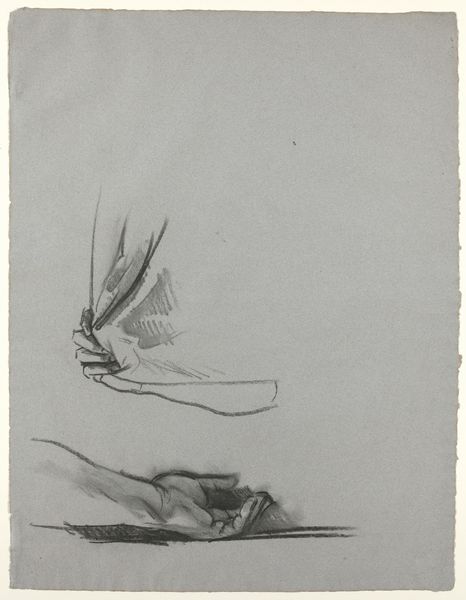
#
toned paper
#
light pencil work
#
quirky sketch
#
pencil sketch
#
old engraving style
#
personal sketchbook
#
pen-ink sketch
#
sketchbook drawing
#
pencil work
#
sketchbook art
Dimensions: height 204 mm, width 322 mm
Copyright: Rijks Museum: Open Domain
Curator: This unassuming sketch is titled "Mouse in a Mousetrap," possibly created between 1801 and 1825 by Jean Bernard. It is a pencil drawing on toned paper currently residing here at the Rijksmuseum. Editor: Oh, a bit grim, isn't it? The stark linearity of the trap set against the soft curves of the rodent—it creates an unsettling tension in what would otherwise be a rather quaint drawing. Curator: Precisely. Note how Bernard renders the mechanical precision of the trap, with its rigid angles and clear delineation of parts. It contrasts starkly with the more organic, softly shaded form of the mouse. He masterfully uses light pencil work to render textures that are rough, like the wooden surface. Editor: It brings to mind classic vanitas imagery. The mouse, often a symbol of earthly desires and vulnerability, faces its inevitable demise. That trap is a clear stand-in for mortality, a harsh reminder of life's fragility. This motif of the predatory trap preys upon cultural anxieties relating to scarcity. Curator: Indeed. And the composition, simple as it seems, subtly directs the viewer's eye. From the top of the trap down the spring coil to the very delicate outline of the mouse, it builds from chaos to consequence. The texture seems to create a feeling of anxiety to be caught and consumed by its design. Editor: I see echoes of fables, perhaps Aesop, where animals embody human follies. This vulnerable creature tempted by bait, unaware of the impending doom...it reflects a cautionary tale of impulsive desires. Think also of its implications related to health in times of plague. It adds layers of historical weight. Curator: A potent interpretation! One might even extend that reading to consider broader themes of power and subjugation—the artist implying the unequal relations inherent in all systems through simple iconography. Editor: The quiet tragedy captured in pencil. Makes one think about how such tiny forms shape big, lasting narratives. I have no questions here. Curator: Well, this simple scene indeed yields a surprisingly profound aesthetic statement about existence, choice, and inevitability, all articulated through form and function.
Comments
No comments
Be the first to comment and join the conversation on the ultimate creative platform.
